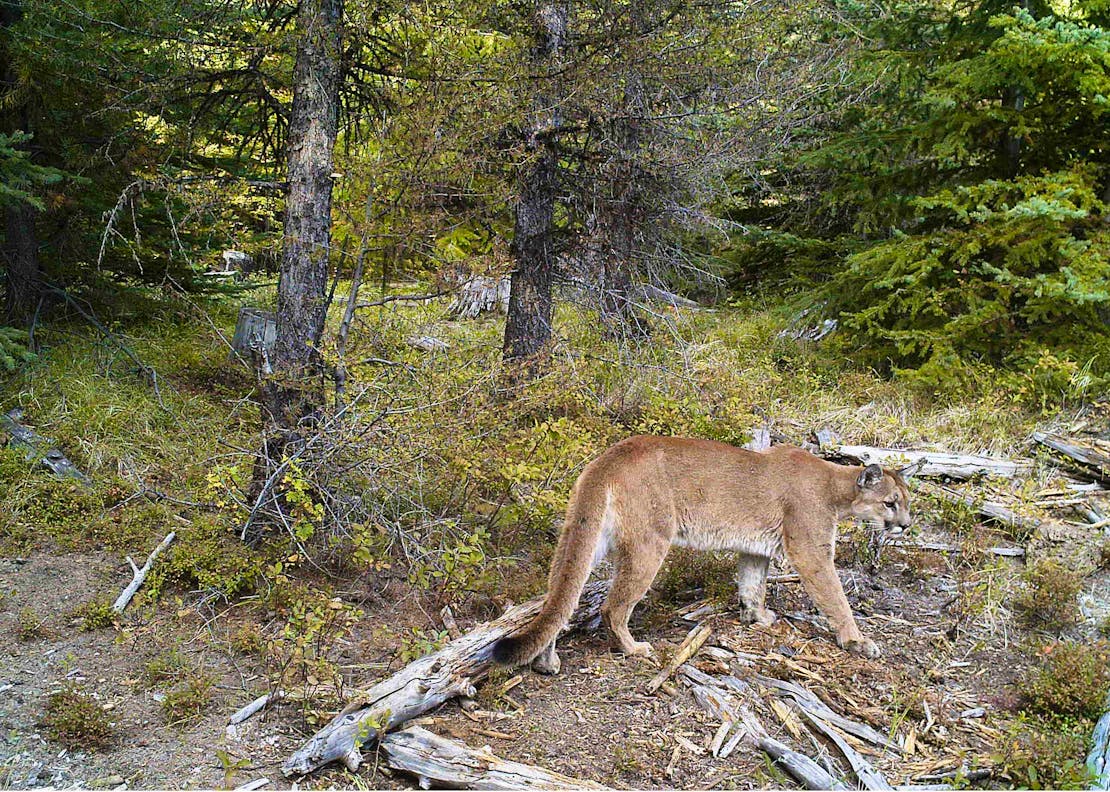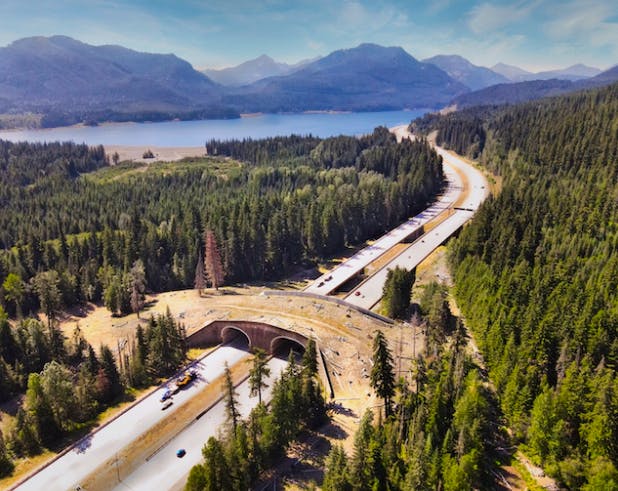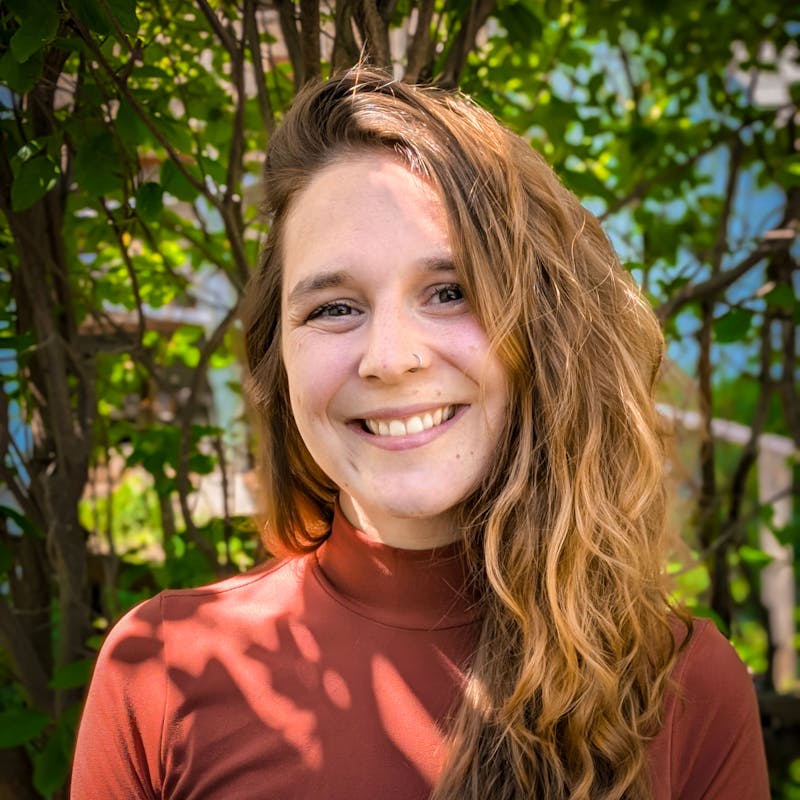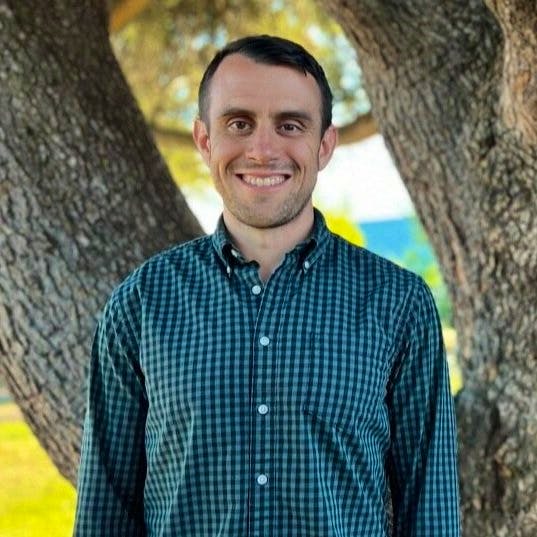The ability to travel is crucial in the long-term persistence of many animals. Every year in the Northwest, terrestrial animals of all kinds and sizes move across the landscape to fulfill their needs for survival. Some exhibit annual seasonal movements and embark on incredible migrations like the Crescent Herd of mule deer in central Oregon who travel more than 90 miles from their summer to winter ranges. While other movements are more nomadic, with animals dispersing long distances in search of food or a territory to call their own; like a young cougar in Washington, who traveled more than 1,165 miles around the entire Olympic Peninsula over a four-month period.
Human-caused changes to the landscape — roadways or fences, for example — fragment the landscape into smaller, isolated habitat patches and can affect the ability of wildlife to move freely across the land. Roads often degrade critical resting sites along migration routes or disturb essential habitat for sensitive species. These disturbances go beyond the roadway itself. For example, when a large highway is built, different – and often invasive – vegetation colonizes around the road. Furthermore, roads result in noise pollution that disturbs many animals and may prevent them from using the surrounding areas.
Roadways also provide a convenient means for people to access previously inaccessible tracts of land, often leading to development and land use changes such as increased logging and conversion to agricultural land. Currently over 87,000 miles of roads in Washington have eliminated more than 174,000 acres of habitat; a bleak picture, but all is not lost. Targeted advocacy and action can help begin the process of re-establishing corridors that preserve landscape connectivity for all species to thrive in the Pacific Northwest.
In Oregon and Washington, there is a growing awareness of the importance of reconnecting fragmented habitat. Defenders of Wildlife’s Northwest Program is actively working alongside federal, state and local partners to do just that. Read on to learn more about three ways we are accomplishing this goal.
Protecting Important Habitat
Defenders’ advocates for the protection of important habitat, such as wildlife corridors, during public land management planning. We recently recommended increasing protections of important forest corridors for northern spotted owls in the Northwest Forest Plan. Additionally, we recommended the Forest Service revise their plans to account for the impacts of roads on wildlife, especially for species seeking new homes due to alterations in habitat caused by climate change.
Improving Wildlife Vehicle Collision Reduction
Oregon and Washington each have at least 6,000 ungulate (hooved mammals, like deer) vehicle collisions per year. This number is likely much higher when accounting for animals that are hit and then move out-of-sight. While collisions with deer and elk are the most common, many species of wildlife are struck and killed on roadways but not reported.
Take Oregon as an example: the Oregon Department of Fish and Wildlife estimates over 14.5 million animals are struck by vehicles every year in the state. On average, wildlife-vehicle collisions cost Oregon drivers $140 million annually and result in 521 injuries and four deaths per year, posing a major safety risk to both humans and animals.
In the 2025 Oregon legislative session, Defenders advocated alongside other organizations for the passage of a bill to improve the existing wildlife-vehicle collisions reduction program. This bill passed out of the legislature on April 30 and just awaits Governor Kotek’s signature to become law. The improvements include inter-departmental coordination, establishing a statewide advisory group and requiring the Oregon Department of Transportation to consult with Oregon Department of Fish and Wildlife to avoid, minimize, and mitigate impacts to wildlife corridors when constructing or maintaining transportation infrastructure.
In Washington, Defenders is actively participating in and supporting the Washington Habitat Connectivity Action Plan being prepared by the Washington Department of Fish and Wildlife in conjunction with the Washington Department of Transportation. When finalized, this plan will identify statewide priority locations for habitat connectivity across roadways and offer comprehensive connectivity data to conservation groups, like Defenders, to use in planning of future projects.
Building New Passages for Wildlife
Connectivity across roadways comes in many shapes and forms. It can be grandiose overcrossings, like the Snoqualmie Overpass on I-90 in Washington, or humble tunnels, such as the Palensky Frog Crossing in Portland, Oregon. Sometimes older structures can be retrofitted to better promote wildlife movement or fencing can be added to funnel wildlife towards an existing structure, like at Janis Bridge on Highway 97 in northern Washington.
Regardless of the structure or location, there are many opportunities and methods to improve connectivity. Crossing structures have proven to be effective for restoring movement corridors in the Northwest. The Snoqualmie Pass has documented over 25,000 animals using the structure to date, while the Lava Butte Wildlife Crossing in Oregon has resulted in an over 90% reduction in deer-vehicle collisions.
While the Northwest has many success stories to boast about, there is still much work to be done. Defenders is diligently working with partners on local wildlife crossing projects, including two in Oregon. One is aimed at reducing wildlife-vehicle collisions in one of the worst roadkill hotspots in the state, while the other would restore connectivity across a stretch of roadway that is currently a major barrier to wildlife movement.
Stay tuned for more updates on these projects and our connectivity work in the coming months!










